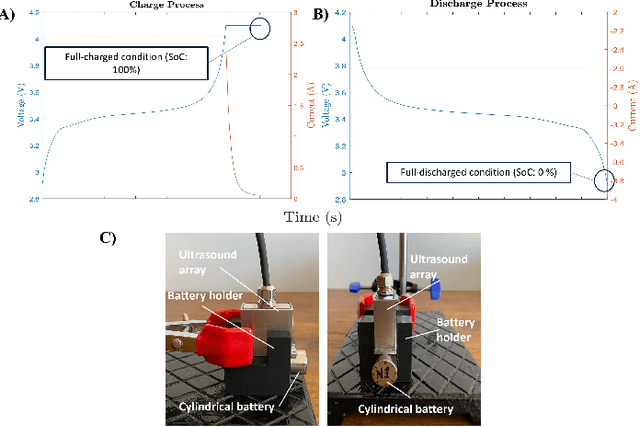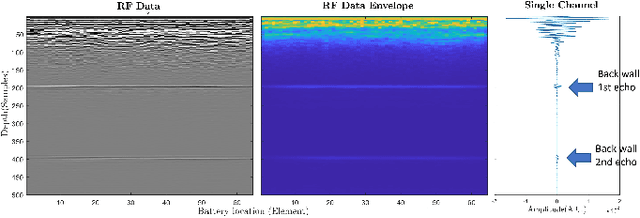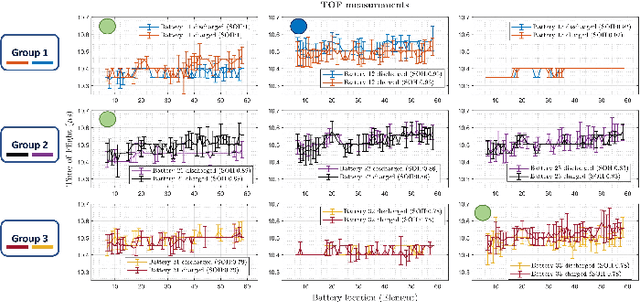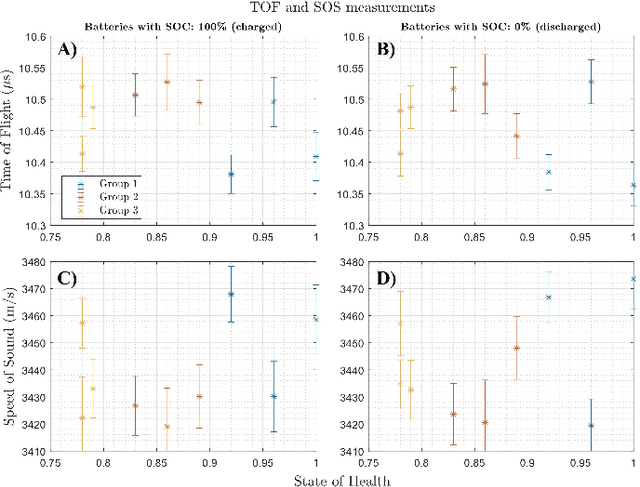Noninvasive ultrasound for Lithium-ion batteries state estimation
Paper and Code
Oct 26, 2021



Lithium-ion battery degradation estimation using fast and noninvasive techniques is a crucial issue in the circular economy framework of this technology. Currently, most of the approaches used to establish the battery-state (i.e., State of Charge (SoC), State of Health (SoH)) require time-consuming processes. In the present preliminary study, an ultrasound array was used to assess the influence of the SoC and SoH on the variations in the time of flight (TOF) and the speed of sound (SOS) of the ultrasound wave inside the batteries. Nine aged 18650 Lithium-ion batteries were imaged at 100% and 0% SoC using a Vantage-256 system (Verasonics, Inc.) equipped with a 64-element ultrasound array and a center frequency of 5 MHz (Imasonic SAS). It was found that second-life batteries have a complex ultrasound response due to the presence of many degradation pathways and, thus, making it harder to analyze the ultrasound measurements. Although further analysis must be done to elucidate a clear correlation between changes in the ultrasound wave properties and the battery state estimation, this approach seems very promising for future nondestructive evaluation of second-life batteries.
 Add to Chrome
Add to Chrome Add to Firefox
Add to Firefox Add to Edge
Add to Edge